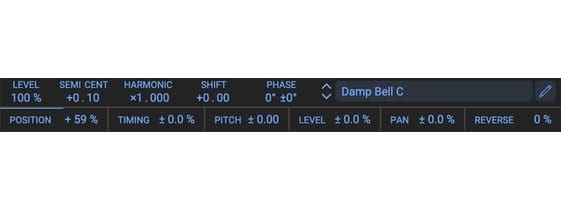Spring is in the air, and fresh new sound design tools are here. One of the latest and greatest pieces of kit has come as “Granular,” the new granular synth module as part of an update to Kilohearts’ Phase Plant. Without touching too much on the complexity, granular synthesis is a type of sound synthesis that involves producing a sound from a number of tiny play-heads or selected moments of sound called “grains” that play across a sound source, usually a sample. This is a popular process for producing gorgeous atmospheres, large sound beds, and cinematic environments.
Due to its complex nature, there are few synths available that do this, and without showing too much bias, even more so, few that do it well. Granular, now inside Phase Plant, is a massive exception to this thought, as it brings complexity in a simple format that is dynamic and empathetic to the end user. Just at the right time, Granular has come to freshen up our sonic environments.
Note: Granular is available as a free expansion to current Phase Plant owners. Phase Plant, along with the new Granular module are available for both Mac and PC users and can be purchased on Plugin Boutique.
- The full granular oscillator layout
- The waveform window
- Grain settings
- Oscillator settings
- Voicing settings
- The chord generator
- The envelope
The Granular Oscillator Layout

Let’s begin by taking a birds-eye look at the entire Granular module within Phase Plant, and then take a closer look at the inner workings. Working from left to right and top to bottom, the module includes several features and parameters that come stock with most oscillators, with a few exceptions that are particular to granular synthesis.
First is the oscillator window displaying the waveform of a loaded sample, and the sample play-head. Next is the grain envelope, followed by the voicing options; this is where users can make detailed grain, playback, and voicing setups with the chord feature being a key feature.
Below are the oscillator settings where users can adjust the usual volume, tuning, and phase of the loaded sample. Directly below includes parameters for adjusting the random play-head position, timing, panning, and reverse amount- a distinctly interesting feature. With the CHORD parameter toggled on, a display for setting up chord voicing and strumming style appear. The strumming feature is most notable being this is another unique feature to Kilohearts’ granular synth.
Lastly at the bottom is the envelope in which users can make simple ADSR envelope adjustments either through free-form grid manipulation, or the respective parameters on the left.
This simple and intuitive display, as with all of Kilohearts’ other products, makes for an immediately fun and inspiring experience. The greatest benefit of any synth or plug-in for that matter is a user-friendly interface. In the case of a complex synthesis process, the ability to boil down all of the essentials, without taking away from the result, is a huge achievement. Now that we have an understanding of the layout, let’s take a closer look at Granular.
The Granular Waveform Window

Amongst the key features of the Kilohearts Granular module is the waveform window; a simple yet incredibly clear and detailed interface. The representation above features all of its main components: the waveform of the loaded sample, the sample play-head at the start of the sample, and most importantly, the tiny blue dots sporadically laid out across the waveform. These blue dots are the grains and they appear and interact according to the user’s grain settings. Of all the other granular synths I’ve tried out, this one has the clearest to understand grains interface due to its high-quality simple design and interactive representations.
Grain Settings

Granular’s grain settings are as well easy to understand and set up; considering grains are the main function of granular synthesis, this is a massive benefit for getting great results without needing too much theoretical or technical knowledge of the synth. Users can simply adjust the number of grains, their envelope, start position, either unipolar or bipolar, and “spawn timing,” an eloquent description from Kilohearts. The free-form grain envelope in particular is a complete revelation in grain design. The ability to shorten or lengthen the body of grains in an intuitive way is a function I’ve not seen on other granular synths, and again is an incredibly simple and clear way to design a desired sound.
Oscillator Settings

A quick look at the oscillator settings reveals all of the usual parameters for oscillator setup. Inside users can set the level, tuning by semitones and cents, desired harmonics, (a fancy way of adjusting the tuning by multiplication of the fundamental frequency), pitch shift, and phase of the chosen sample which can be loaded through the menu displaying the sample name.
Directly below are a few gems; randomness parameters for grain playback which include play-head position, timing, pitch, level, and pan. Traditionally granular synthesis has been known for a degree of randomness, mostly in position and timing, however, the inclusion of pitch, level, and pan creates even more opportunities for interesting and bizarre sounds. Next to these settings is a reverse amount parameter which is great for getting a dynamic between forward and reversed playback moments in the overall sound due to it working in percentage amount, and not as a strict on or off toggle.
Continuing the trend, the oscillator settings are clearly laid out resulting in effortless sound shaping.
Voicing Settings

Although simple at first glance, the voicing settings are equally important as some are unique to Phase Plant and offer both creative and technical detail not commonly found. The first and most obvious functions are the root note set and lock. Engaging the lock keeps the sample playing the set root note no matter which note is played on the keyboard, while the root note is where users can set the sample the root note at which the sample was recorded.
Below are two toggles for phase alignment and what is called “Warm Start,” which subtly lend themselves to further creativity and technicality. “Align Phases” turned on adjusts the starting times of grains so that they are in phase- a genius function certainly helpful for a more technical and sometimes higher quality final result. “Warm Start” toggled on sets the grains to already be running when new notes are played- this is somewhat like a legato in that when a note following others is played, the preceding note’s attack doesn’t follow what has been set up in the grain envelope.
Lastly to the upper right is the chord voicing toggle, which when enabled plays the loaded sample as a chord, and various chord voicing options popup below the oscillator settings.
The Chord Generator

The chord generator in Granular is one of the coolest and most unique functions in the synth. To start, users can decide between several chord types such as the usual major and minor, their extended 7th sisters, and all the way up to the diminished 7 cousins. What makes this function fun however is the strumming feature, represented by the “Range” parameter, and the ramp up/down, triangle, and random shapes to the left.
Setting the range engages the strumming feature, and operates in octaves and semitones- this means that a lower value will result in less pitch range, while a higher value creates more. The different shapes represent the style of strumming- strum up, down, up & down (think of a triangle LFO), and random strumming. A noticeable sonic quality is a somewhat glittery spectral sound when the range is set to higher values.
The Envelope

Lastly upon loading up an instance of Granular is the native Phase Plant envelope. Just like when loading an instance of Phase Plant’s other synthesis engines, an envelope window appears along with Granular, and features the usual ADSR envelope parameters with corresponding free-form editing graph, as mentioned previously. Although this window doesn’t have a direct effect on Granular’s quality, it is important to note, especially in the case of making atmospheres or popular granular synthesized sounds, that adding a touch of slower attack and release can be of massive benefit to the overall playability and dynamics of the sound. Kilohearts’ sticking to their less is more visual approach makes these adjustments easy to fine-tune.
Conclusion
Granular, as part of Kilohearts’ 2023 update to Phase Plant, is certainly one of the biggest things to happen to the synth itself, and to the world of granular synthesis. Speaking without bias, Granular is the most accessible granular synthesis engine currently available, and the best part is that it is an addition to an already high-quality larger entity. However, just in terms of the new granular mode, Kilohearts have delivered an incredibly fun and intuitive piece of sound design beauty that generates great results near immediately, largely in part to its interface, and Phase Plant’s first-rate sound profile.
Now I turn to you- what kinds of sounds are you making with this new update? Maybe you’ve stumbled across another granular gem? Has that one synth finally added randomness?? I’ll be curious to hear.
Before signing off and speaking of Phase Plant…we’ve recently uploaded a well-rounded collection of 25 fresh new Phase Plant presets which you can download for FREE! It was loads of fun making these sounds, and I hope you enjoy.
Thanks so much for reading.
About The Author

Name: Imaginate
Bio: Imaginate is a renowned American recording artist and award-winning sound designer known for his unique, eclectic blend of music. In 2019, he began releasing a series of award-winning collections, including Glitch Kitchen and Kaleidoscope Neuro DNB on Loopmasters and Aqua, Charta, Verre, Terra, Metallum, and Aer as part of the Elements Series with Black Octopus Sound, and released on Splice. He has also released numerous synth presets and sample packs with Slate Digital. Imaginate is also a songwriter, composer, and performer of original music which you can listen to here.
